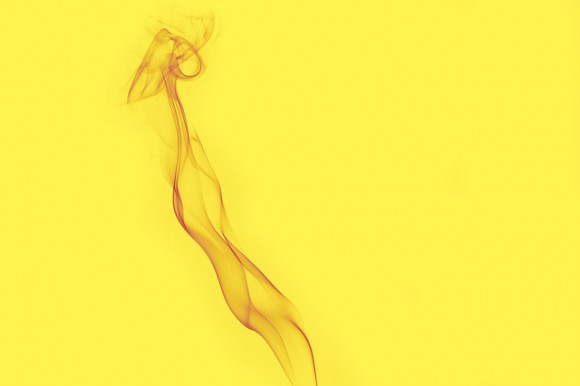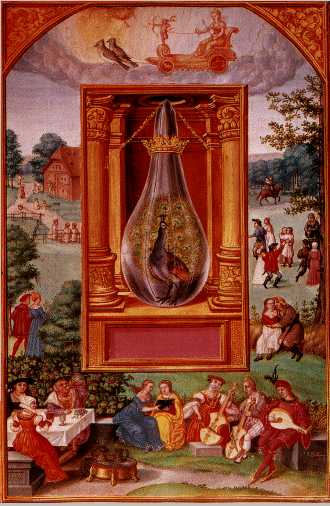
Usually lucid dreaming is discussed as dream control, but this is not the only approach. In a lucid dream of surrender, the dreamer intentionally stills the logical mind at the moment of lucidity, taking a receptive position.
This is not a new idea. In fact, the roots of this process can be seen in the ancient art of alchemy.
Many view alchemy as the origins of modern chemistry via the search for the elixir — the secret catalyst that would turn dross matter into gold. However, alchemy actually began in ancient Egypt as a means of communicating the mysteries of the inner world. The practice of alchemy was known as the “Great Art” or the “Sacred Art.”
Fast forward to the 20th century.
Alchemical emblems: tracking the transformative process

Psychologist Carl Jung recognised that —across cultures— alchemical stages and imagery reveal the process of what he called Individuation: the process whereby a person’s inner nature becomes realised in the outer world. From this point of view, the true alchemy is the Art of Personality.
Psychological health in this sense is aligned with the idea of wholeness: physically, psychologically, and psycho-spiritually through a relationship to the unconscious in dreams. Jung saw the transformation of the psyche mirrored in alchemical emblems and viewed dream imagery as depicting both personal and Transpersonal archetypes and qualities.
From a Jungian perspective, then, dreams are mini alchemical emblems that reflect a person’s psycho-spiritual condition and suggest what is needed for transformation. On one level, alchemical emblems track the inner transformation of the dross matter of lives into the true gold of personality. On yet another level, alchemical emblems provide a pictorial guide to healing lucid dream experiences. In the outer world, this analogy parallels that of the relationship between classical Newtonian physics and Quantum Mechanics.
Surrender in Lucid dreaming
In the unusual brain state of the lucid dream, the mind activates a balance between both sleeping and waking mental processes.[1] The subjective experience of this state is translated into images that take on an objective reality for the dreamer — an experience of the intuitive mind that is often difficult to articulate in language. This healing lucid dream imagery has an internal symmetry that serves to collect the dispersed elements of the psyche and establish internal balance in the dreamer.
At the moment of lucidity, the dreamscape disappears as the dreamer takes a receptive pose. Here’s a recent example that emerged after having come through a challenging time at work.
The Crystal Tubes
Am by the sea in a dream and pass by a large granite stone with a streak of bright green moss running along the centre from top to bottom. I stop to admire the green. When I touch the moss, an intense joy runs through me as the thought comes: “The green is the Holy Spirit.” With this awareness, lucidity comes.
This time, as I bow my head, my being is pulled backwards onto the black winds very fast and hard. Sing a holy hymn. It is impossible to think or wonder. But then the speed slows and my being is in a space filled with cubes and other geometric forms of light. Two thoughts come: the first is “Here are the cubes.” The second, “Now I am in Plato’s realm of ideal forms” because these forms have appeared in other lucid dreams. However, at this point, the edges of the cubes angle out and surprise me by turning into crystalline shapes.
Then it feels my being is taken through a beautiful, immense, mine tunnel of light crystals. At the end of the “tunnel” there are forms of tubular light packed tight like crystal organ pipes. They rain their light down as music on me. When the light touches the crown of my “head,” all sense of separation disappears. The light fills me, purifies, cleanses, and renews me. But it is not just me somehow that is filled, it is Life itself. The feeling is of complete delight, wonder, and humility.
After some time, I sense a subtle shift in my awareness and feel my being lifted up as if from the bottom of a deep sea into waking consciousness and back into a dream with my dream teacher by the sea.
My intent is to add to the conversation on lucid dreams and to present a timeless perspective in contemporary terms. I look forward to your participation in this conversation.
About the Author:
Melinda Powell is a psychotherapist in private practice as well as Service Director of HELP Counselling Centre in London. On the website MelindaDreams you will find her current work as well as more lucid dreams of surrender.
Images: Fall back, by vishwaant (CC); The Peacock’s Tail © Adam McClean.
Notes:
[1] Hobson, Allan J. (2009) The Neurobiology of Consciousness: Lucid Dreaming Wakes up. The International Journal of Dream Research. Volume 2, No. 2. pp. 41-43.
[2] Henderson, J.L. & Sherwood, D. N. (2003). Transformation of the Psyche: The Symbolic Symbolism of the Splendor Solis. Routledge: East Sussex. pp. 137-142.
Excellent article–thanks! Surrender in lucid dreams has resulted in very profound experiences for me.
Mary’s perspective blends Jungian thought with lucid dreaming… such a balm for old wounds. Surrender in lucid dreams has also led to some incredible dreaming outcomes for me. the ability to do this has turned out, for me, to be a dividing line: towards initiation into the deeper realms of lucidity.
Hi! I wanted to ask you a question that I can’t solve myself… Why my temperature raises while sleeping? I was searching in Internet and as far as I understood, the temperature decreases… But every time I fall asleep my body temperature raise till my husband needs to be far far away to let him sleep (so it’s a goof thing when it’s Winter), but the worst comes if I fell asleep during the day (which is something I do one a year… I just can’t sleep during the day), but if I do, my temperature raises that much that I wake up sweating a lot, headache and feel very very bad… I hope you have any idea why sleeping do that. Thank you very much!
Karl–Thanks for your comment.
Would like to know about the experiences you’ve add with lucid surrender. If you’d be open to that, you can send the dreams to me via: info AT luciddreamalchemy.com.
On the website there’s some guidance on this under “Submit Your Dreams”.
Meanwhile, all the best and Thanks again.
Burus,
generally, the body’s core temperature does fall during the night. An exception to that is during REM sleep, when the body’s temperature basically matches the environment. we cycle through REM four to six times a night, the longer periods are during the second half of the night. It’s possible that your bedroom is simply too hot for your personal preference: it’s better for a room to be slightly cool than slightly hot. If you’re excessively sweating mostly when you sleep (but not when awake), it’s also possible that the cause is an underlying sleep issue or another health concern. Menopause, for example, but many other more serious possibilities. If you (and your partner) are losing sleep regularly, I recommend seeing a sleep specialist in your area.
Thank you very much for your kind answer, my temperature increase in any room I just need to fall asleep haha, I’m 27 and I’m always like that maybe because of the REM, we have no trouble sleeping, I’m just not hugable at sleeping if it’s not cold, I’m so glad that you gave me this info about the REM and that maybe I had bad dreams when I wake up sweating cuz I’m not a person that sweats easily. Thank you again for your response 🙂
Great article. I love the perspective that dreams can be seen as alchemical emblems tailored to each individual dreamer. My sense (as Ryan’s comment attests) is that quite a lot depends upon how one works with the lucid dream, and that it can be a real opportunity to do transformative (alchemical) work if one uses it in that way (but that, like any “tool” can be used in other ways as well, some less helpful than others).
The idea of conscious surrender has strong roots in the alchemical and Rosicrucian traditions, and utilizing the technique in the setting of the lucid dream, where the conscious mind mingles directly with the unconscious mind can yield some very powerful insights.
I’d also like to note that while the vast majority of dream images may have to do with personality elements, this does not exhaust the full spectrum of dream images. This, of course, is the meaning behind the word “transpersonal”. Working with dreams in an alchemical way is a potential opening to the transpersonal nature of dream states, where what one experiences cannot be reduced to the individual…